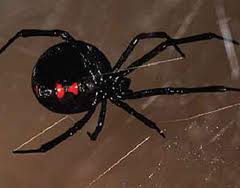Swimming With The Sharks
Brian Skerry, 'Sharks'
 Brian Skerry has spent more than 10,000 hours underwater photographing sharks. He says they're misunderstood and not the evil beasts portrayed by Hollywood and the media. He'll share stories including some scary (Skerry) moments.
Brian Skerry has spent more than 10,000 hours underwater photographing sharks. He says they're misunderstood and not the evil beasts portrayed by Hollywood and the media. He'll share stories including some scary (Skerry) moments.
Brian Skerry is a photojournalist specializing in marine wildlife and underwater environments. Since 1998 he has been a contract photographer for National Geographic magazine covering a wide range of subjects and stories. In addition to logging countless hours underwater, Skerry has lived on the bottom of the sea while on assignment, spent months aboard fishing boats and traveled in everything from snowmobiles to canoes to the Goodyear Blimp to get the picture.
When he was 15 years old, Brian started scuba diving. He loved the ocean and started photographing many animals in the ocean, such as whales and seals. However, sharks have been a long time interest of his for a variety of reasons, one of those being that if he spent time with sharks it would give him that 'street cred' as a diver and add a dimension of bravado to his persona - things a boy and diver believed to be especially important!
Brian saw his first shark back in 1982 in the wild and was captivated by how stunning they are. As a photographer, they sort of represent the perfect subject. They blend grace and power; they move eloquently through the water, yet they exude this confidence.
Over the years, Brian also started seeing them as a fragile species, which are in peril. As a journalist, he wanted to tell this part of the story as well. Commercial fishing is killing more than 100 million sharks every year.
People don't understand that sharks play a vital role in the ocean. If you think about the fact that every other breath that human beings take comes from the sea. The ocean generates more than half the oxygen we breathe. Then think about the role that predators play to the health of this eco-system, whether its wolves or grizzly bears or sharks, you begin to see that for our own existence, we really need sharks in the ocean.
 Brian states that generally he is not in a cage when he is photographing sharks, except for when it comes to the great white. While there are some people who chose to photograph white sharks while not in a cage, Brian feels that this is one species he feels he should be in a cage for. As a photographer, it is always better not to be in a cage, because you can do more and get better angles and a better photograph. He says that there are over 500 species of sharks in the world and he has maybe photographed a few dozen of them.
Brian states that generally he is not in a cage when he is photographing sharks, except for when it comes to the great white. While there are some people who chose to photograph white sharks while not in a cage, Brian feels that this is one species he feels he should be in a cage for. As a photographer, it is always better not to be in a cage, because you can do more and get better angles and a better photograph. He says that there are over 500 species of sharks in the world and he has maybe photographed a few dozen of them.
The reality, despite misconceptions about sharks wanting to eat humans for many years, we are not on their menu, according to Brian. Most sharks are fish eaters and they don't eat mammals. Although sharks do occasionally attack and a bite human, Brian feels it is a case of mistaken identity. A big predator shark, like a great white, might think that a swimmer is a seal or a turtle. Brian explains that as a rule, it is actually quite difficult to get close to sharks under water.
While sharks are misunderstood, Brian feels that it is more a lack of understanding. Sharks have been portrayed as villains and monsters for many years, which sells. The reality is that these are complex animals. Each shark has a different sort of behavior, and Brian thinks there is a belief that, "A shark is a shark is a shark!" However, they are all very different and occupy different places in the ocean. They do different things. Their biology is different. They have different morphologies. They are shaped differently depending upon where they live. We really don't know that much about them, but we are beginning to see is that they have personalities and ways of behaving that are not unlike other animals, even mammals.
Brian tells us that there have only been about 3 or 4 times where he felt the need to get out of the water when photographing sharks. One of these times he was in a remote part of the South Pacific in a place called Millenium Atoll. He said it was like going back in time and it was full of sharks and lots of other predators. He was diving at sunset, and he's noticed that in lots of places with coral reefs that is when sharks get amped up a little bit. This is the time when they begin hunting, during the changeover from light to dark. He lost count at maybe over 60 of these great reef sharks. He said they were definitely in a hunting mode and were coming at him. Brian was bumping them and they weren't backing off. He knew he had to get out of the water quick and wasn't going to get any good shots anyway.
 Check out Brian's book, Shark, which is a collection of his best pictures. Focusing on four key species—great white, whitetip, tiger, and mako sharks—Skerry's photographs span from his early work, photographing them from cages, to his recent unencumbered scuba dives.
Check out Brian's book, Shark, which is a collection of his best pictures. Focusing on four key species—great white, whitetip, tiger, and mako sharks—Skerry's photographs span from his early work, photographing them from cages, to his recent unencumbered scuba dives.
Brian Skerry has also teamed up with National Geographic to bring that spirit and the shark experience to life across its many events like:
- A National Geographic exhibition called "Sharks: On Assignment with Brian Skerry," open through October 15 at the National Geographic Museum in Washington, D.C., featuring Skerry's large-scale images, videos, artifacts, models and interactive experiences.
- The premiere of Nat Geo WILD's fifth annual SharkFest on July 23 at 8/7c. Nat Geo WILD's SharkFest has the most sharks per square inch on television, making this jaws-a-thon a must-see for the entire family. Follow Skerry on his mission to highlight the importance of our planet's sharks in Mission Critical: Sharks Under Attack, discover rare shark feeding events in the premiere of Shark Swarm, see where sharks go at night in Tiger Shark Terror and witness which species prey on sharks in Shark vs. Predator. It will be a week of insights from shark experts and incredible footage of shark behavior to get a comprehensive look at the species in all its glory.
- A special live event with Brian hosted by National Geographic in Cape Cod on July 6 as a fundraiser for the Atlantic White Shark Conservancy, where Skerry sits on the Board.
Visit Website
Giving 10,000 Animals a Bus Ride and New Leash on Life
Mike McCarthy, Rescue Express
 Mike McCarthy made his millions in software development. After retiring, he decided to take on a new project transporting thousands of adoptable pets from saturated shelters in Southern California to the Northwest United States where they will be adopted. He's retrofitted 3 buses and makes the trip weekly. Mike has been involved with the rescue world for about 20 years now and he was aware of people transporting animals to other locations for adoptions, but said they did it poorly.
Mike McCarthy made his millions in software development. After retiring, he decided to take on a new project transporting thousands of adoptable pets from saturated shelters in Southern California to the Northwest United States where they will be adopted. He's retrofitted 3 buses and makes the trip weekly. Mike has been involved with the rescue world for about 20 years now and he was aware of people transporting animals to other locations for adoptions, but said they did it poorly.
Mikes latest endeavor is Rescue Express. Rescue Express is a transport service that he created to move animals from Southern California to Oregon, Washington and Canada. He transports animals to these locations because they actually have a shortage of adoptable animals, while there is an extreme overpopulation of adoptable animals in Southern California, and these animals would most likely be euthanized.
While Rescue Express just does the transport, they work with rescue partners in all these locations and make their buses available for any rescue that wants to transport animals to other rescues. Rescue Express then takes the animals to a pre-determined rescue that is waiting for them. Each trip carries about 125 animals.
 Mike explains that while there are many people doing what he is doing, he noticed that they were doing it all wrong. Perhaps they had too many animals, no air conditioning or just not the right vehicle such as cramming 40 animals into one van. And when and if the animal reached its destination, they were in rough shape. He thought he could do it better. He did some research and found that school buses were the best to use. He started off with one 40-foot school bus and personally and financially refurbished it for transport. He took out all of the seats and placed 100 carriers along the sides. This allows him to have a clear path down the middle of the bus so he can check on the animals to see if they need anything, from water to even cuddles. He now has 3 such buses. It costs an average of $3,000 for each weekly trip, including gas, staff and hotels, which comes out to about $20 per animal.
Mike explains that while there are many people doing what he is doing, he noticed that they were doing it all wrong. Perhaps they had too many animals, no air conditioning or just not the right vehicle such as cramming 40 animals into one van. And when and if the animal reached its destination, they were in rough shape. He thought he could do it better. He did some research and found that school buses were the best to use. He started off with one 40-foot school bus and personally and financially refurbished it for transport. He took out all of the seats and placed 100 carriers along the sides. This allows him to have a clear path down the middle of the bus so he can check on the animals to see if they need anything, from water to even cuddles. He now has 3 such buses. It costs an average of $3,000 for each weekly trip, including gas, staff and hotels, which comes out to about $20 per animal.
Rescue Express is a 501©(3) charity that started about 30 months ago with their first transport on Valentines Day 2015. So far, they have transported around 10,000. While most of the animals are carts and dogs, they have also transported bunnies, pigs and even ferrets. They rely upon donations from the public.
Visit Website
No More Anxious Pets
Kristen Levine, Pet Living
 With the 4th of July around the corner, Pet Living's Kristen Levine wants your pets to stay calm. The sounds of fireworks can make animals anxious. She's launched "Pet Anxiety Awareness Week" to educate owners about fear, anxiety and stress in your companion animals.
With the 4th of July around the corner, Pet Living's Kristen Levine wants your pets to stay calm. The sounds of fireworks can make animals anxious. She's launched "Pet Anxiety Awareness Week" to educate owners about fear, anxiety and stress in your companion animals.
The First Annual Pet Anxiety Awareness Week (PAAW) launched June 25, 2017 to Educate Owners about Fear, Anxiety and Stress (FAS) in Animals. Even though it is being recognized during this week, their website is on going with educational information and resources for people who have dogs or cats that are suffering with anxiety. PAAW aims to help keep families together by providing resources, tools and expert advice on FAS from pet and veterinary experts like "America's Vet" Dr. Marty Becker and renowned dog trainer Andrea Arden. Support for Pet Anxiety Week is also provided by pet and veterinary industry partners, Fear Free Pets and Vet Vine.
Fireworks and loud noises, or separation anxiety when left alone can trigger fear, anxiety and stress.
Dogs might show signs of anxiety by hiding, panting or shaking. It may even include vocalization, such as whining or barking, and even inappropriate elimination. In extreme cases, the dog might even hurt himself.
 Kristen tells us about her late dog, Buck, who had an extreme case of separation anxiety and noise phobia. When left alone, her dog would tear into the door casing that they walked out of, and chew the molding and drywall down to the studs in the wall. This would then expose the nails in the studs. When Kristen returned home, she found the door tore up and blood dripping down the wall. Her dog even wore down his teeth to nubs.
Kristen tells us about her late dog, Buck, who had an extreme case of separation anxiety and noise phobia. When left alone, her dog would tear into the door casing that they walked out of, and chew the molding and drywall down to the studs in the wall. This would then expose the nails in the studs. When Kristen returned home, she found the door tore up and blood dripping down the wall. Her dog even wore down his teeth to nubs.
Anxiety is a little harder to detect in cats. Cats suffer from fear, stress and anxiety as much as dogs, but we don't recognize it as often. However, you might see that they are hiding, vocalizing, licking themselves excessively and might even become aggressive. This is because they tend to hide it a little better, so we might not recognize that they are experiencing a stressful situation.
One of the reasons Kristen wanted to start Pet Anxiety Awareness Week is because if you catch it early on, you might not have to medicate your pet like she did with Buck. There are behavioral modification things that you can do. There are also all-natural products you can use to curtail it so it doesn't worsen.
You can also de-sensitize your pet to noise. Dr. Debbie tells us how she did this with her own dogs. She has an App on her phone with sounds of airplanes, trains, thundershowers and fireworks. She starts out by playing the sounds at a low level, along with some classical music at the same time. If her dogs are calm and don't show any signs of anxiety, she will increase the volume slowly. She will also be doing things with her pets at the same time, like feeding them or providing them with chew toys, which gives them something else to focus on. But if she notices that they are showing any signs of fear or discomfort, she will turn the volume down and not recognize or coddle her dogs. Some behaviorists say if you coddle your dog during times of stress, you are reinforcing their fear.
 This year, Pet Anxiety Week is sponsored by Calmz Anxiety Relief System by Petmate. Calmz is an all-natural, drug-free solution to canine anxiety, fear and stress. The wearable therapeutic device, cradled in a Comfort Fit Vest that fits snuggly over acupressure points, features NeuroSync Technology® that emits proprietary low frequency tones, classical music and delivers a mild vibration to relieve anxiety in dogs. The device has been clinically tested by leading veterinarians and veterinary behaviorists across the country and 91-percent recommend the Calmz system for their patients.
This year, Pet Anxiety Week is sponsored by Calmz Anxiety Relief System by Petmate. Calmz is an all-natural, drug-free solution to canine anxiety, fear and stress. The wearable therapeutic device, cradled in a Comfort Fit Vest that fits snuggly over acupressure points, features NeuroSync Technology® that emits proprietary low frequency tones, classical music and delivers a mild vibration to relieve anxiety in dogs. The device has been clinically tested by leading veterinarians and veterinary behaviorists across the country and 91-percent recommend the Calmz system for their patients.
Pet expert, speaker, author and advocate Kristen Levine founded Kristen Levine Pet Living to connect pet-positive companies with the vast audience of pet product and service consumers. The website is a multimedia platform where Levine offers stories, science and advice for living happier and healthier with pets. A leading pet lifestyle and marketing expert for close to 30 years, Levine is a nationally known speaker, media personality, author and blogger, reaching passionate pet lovers.
Visit Website
Black Widow Spiders Poisonous to Pets -Dr. Debbie
 Pet Threats Come in All Sizes
Pet Threats Come in All Sizes
Our doggie family ambled along on our typical morning walk along the community trail. With a family of two Labradors and a Yorkie mix, my crew is always up for fun and they investigate anything and everything.
Sometimes it's a crunchy cockroach snack or the fortunate edible remnant in a discarded candy wrapper. My dogs enjoy the "date game" where they snatch up shriveled fruit fallen from date palms, crunching away before the mom and dad notice. And sometimes it's a half-hearted game of chase with an unsuspecting rabbit. A more gut wrenching episode once involved my Labrador ingesting a rat with tail slipping down his gullet like a piece of spaghetti. My furry kids are professional trouble finders so I try to keep a watchful eye for things that make them go "Oooh," and make me go "Ugh!"
Female Black Widow Spider
While walking along the pedestrian pathway we came upon today's discovery - spiders and lots of them living in the recesses of a block wall. The hairs on my arm stood up as my Yorkie mix approached their lair. I recognize what these spiders are and what could happen to a 16-pound pup.
The long legged spiders were over 1 1/2" in length, black in color with a distinctive orange hourglass mark on its underbelly. Meet the black widow spider, a common arachnid found in every state in the U.S. except Alaska.
The Black Widow Bite
Black widow spiders contain a potent neurotoxin that causes pain, swelling and can lead paralysis. Female black widows are the dangerous ones, while the males rarely ever bite. While some black widow bites go unnoticed, others cause immediate pain at the site or result in pain at the nearest lymph node. Pain intensity reaches its maximum within 1 to 3 hours after the bite, but can last up to 48 hours.
Symptoms of a black widow bite appear within 8 hours after bite an include muscle twitching, restlessness, rigid abdomen and difficulty breathing. Symptoms may result in high blood pressure, a racing heart rate, seizures and collapse. Dogs are more resistant to a black widow bite, but still can suffer serious illness. Cats are very sensitive to the toxins and can suffer fatalities.
Symptoms of black widow bite include:
 - Pain and numbness around bite site
- Pain and numbness around bite site
- Anxiety
- Racing heart rate
- Muscle pain and stiffness, especially abdominal muscles
- Difficulty breathing
- Paralysis
- Seizures
Treatment for Black Widow Spider Bite
Call your veterinarian if you suspect your pet was bitten by a black widow. Initial home emergency care of a black widow bite may include ice packing bite area and oral antihistamines like Benadryl. Your veterinarian will need to see your pet to evaluate and treat the more serious symptoms. Treatment may include medications to control muscle spasms and seizures. Blood pressure and blood sugar are monitored and intravenous fluids may be administered. An antivenin is available for more serious confirmed cases of black widow bite.
Prevention
Avoidance of spider habitats is the best prevention. These eight-legged critters favor dark recesses both indoors and outdoors. Look for cobwebs with a distinctive funnel-shaped opening at the top. And keep a close eye on your dog when out exploring. Inquire about spider control methods with your pest control company.
With pet noses so close to web level, the risk of black widow bites is just natural to being a dog. Our morning spider encounter ended without any drama, thankfully. After one firm "No," my doggies retreated to unearth some other lucky find. Here's to hoping it doesn't involve any rats or bugs next time.
Featured veterinarian known as "Dr. Debbie" on national pet radio program, Animal Radio. Ebook author of "Yorkshire Terriers: How to Be Your Dog's Best Friend"; "Pugs: How to Be Your Dog's Best Friend"; "Mini Schnauzers: How to Be Your Dog's Best Friend"; and "Shih Tzu: How to Be Your Dog's Best Friend."
Visit Website
5 Must Do Things For You And Your Pet To Enjoy Independence Day
Robert Semrow, Listomania
 The 4th of July is nearly upon us and as a pet owner, it presents a unique set of extra preparations to insure that everyone, including your pets, enjoys the 4th of July. It is a sad fact that the day after Independence Day is one of the busiest for Animal Shelters who are overflowing with pets who were scared and panicked by the festivities. Additionally, there are a number of hazardous situations for our pets to navigate during daylong celebrations.
The 4th of July is nearly upon us and as a pet owner, it presents a unique set of extra preparations to insure that everyone, including your pets, enjoys the 4th of July. It is a sad fact that the day after Independence Day is one of the busiest for Animal Shelters who are overflowing with pets who were scared and panicked by the festivities. Additionally, there are a number of hazardous situations for our pets to navigate during daylong celebrations.
Let's begin with what may be the most important and most agonizing for pet parents. Since July 1st happens to be National ID Your Pet Day, it's the perfect time to review your pet's ID's, update their associated information, have their microchip checked and take an updated photo of your beloved pet so that if the unthinkable happens, you are prepared and can act quickly to be reunited.
Next, It's tempting to bring your pet with you to Independence Day festivities like parades, picnics and get-togethers. However, it's highly likely that there is going to be some very loud moments of fireworks, noise poppers or other potential startling and fearful sounds. Since you can't control others actions, think about how your pet is going to react in those situations and whether it would be better to minimize those interactions and potential hazardous situations.
 If they are brought to the event, keep track of them. You must be the guardian of their galaxy as they are going to feed off the energy of those at the event, as well as potentially feeding on the foods of the event. This is another situation that can lead to upset stomachs or even much worse. If your pet has allergies or a sensitive stomach, make sure that you are the only one giving them their food and drinks throughout the day. Another note of concern is that people can be just as much of an issue for your pet's enjoyment. Oversee interactions between your guests and your pets as not everyone clicks or is comfortable around pets.
If they are brought to the event, keep track of them. You must be the guardian of their galaxy as they are going to feed off the energy of those at the event, as well as potentially feeding on the foods of the event. This is another situation that can lead to upset stomachs or even much worse. If your pet has allergies or a sensitive stomach, make sure that you are the only one giving them their food and drinks throughout the day. Another note of concern is that people can be just as much of an issue for your pet's enjoyment. Oversee interactions between your guests and your pets as not everyone clicks or is comfortable around pets.
Alcohol is something that flows at Independence Day gatherings and is easy for curious pets to get in to. Be vigilant about discarded cups and unattended beverages, as your pets don't know what is meant for them or not. That also extends to other chemicals being used at your events. Pets still have not learned to read the back of chemical containers so they are unaware of the potential dangers in liquids that can appear to simply be water.
 Finally, and this should go without saying, but most pets are not fans of loud, jarring, explosions or fireworks. This is often that moment that their instinctual fight or flight response will kick in and your nightmare begins. Provide your pets with the quietest or most normal sounding room area that you can. If you can't keep the sounds minimized, then consider turning up the TV or radio and having that act as normalcy influencer.
Finally, and this should go without saying, but most pets are not fans of loud, jarring, explosions or fireworks. This is often that moment that their instinctual fight or flight response will kick in and your nightmare begins. Provide your pets with the quietest or most normal sounding room area that you can. If you can't keep the sounds minimized, then consider turning up the TV or radio and having that act as normalcy influencer.
Independence Day is filled with great foods, libations, activities, family and friends. With a little planning you can make sure that everyone, including your pets, can enjoy this national holiday.
Share your ways to protect your pet during the 4th of July on our Animal Radio Facebook Page.
Visit Website
The Dogfather's Grooming Tip with Joey Villani
Pet Shampoos
 Summer is finally here and with the warm weather comes dirty dogs. It is a great time to bathe your dog yourself outside in the sunshine, but what should you use? Maybe you don't have any pet shampoo in the house and wonder if it would be okay to use human shampoo on your dog.
Summer is finally here and with the warm weather comes dirty dogs. It is a great time to bathe your dog yourself outside in the sunshine, but what should you use? Maybe you don't have any pet shampoo in the house and wonder if it would be okay to use human shampoo on your dog.
Is it damaging to use human shampoo on your dog? If your dog really needs to be cleaned, perhaps they were swimming or just rolling in something, you really need to get them cleaned, even if you have to use human shampoo. However, this is not something you would want to use long term. It has more to do with than just the pH balance.
For people who don't know, pH balance is the difference between alkaline and acid. A normal pH is measured on a scale from 1 to 14, so 7 would be neutral. Anything above 7 would be more acid and anything below 7 would be more alkaline. Our pets tend to have a more acid-type coat. So what happens when you use human shampoo on a dog? Long-term use can dry out their skin and skin and lead to itching.
It is mainly the fillers that are used in human shampoos. Pet shampoos usually only contain 1 to 10 ingredients. However, look at the label on human shampoo and you will usually find a long list of ingredients. These ingredients include scents and oils and thickeners for the shampoo.
 What these fillers will do is build up on your pet's coat. This will then lead to chemical matting, which is the worst matting you can have on a dog. Think of a dust rag when you dust your house. You spray the rag with a product to pick up dust so it will collect everything. Well that is what your pet's coat is going to do. But as it does this, it will knot and collect everything in the coat, which makes it hard to brush out. Even if you do manage to brush it out, you will see the static connect the hairs right back together, and you will have matting again in a day or so.
What these fillers will do is build up on your pet's coat. This will then lead to chemical matting, which is the worst matting you can have on a dog. Think of a dust rag when you dust your house. You spray the rag with a product to pick up dust so it will collect everything. Well that is what your pet's coat is going to do. But as it does this, it will knot and collect everything in the coat, which makes it hard to brush out. Even if you do manage to brush it out, you will see the static connect the hairs right back together, and you will have matting again in a day or so.
Can you use human medicated shampoos on your dog? Medicated shampoos for people, like dandruff shampoos, react differently with humans than they do with dogs. Dogs have dandruff because they have dry skin, while humans have many different causes for dandruff. Sometimes this medication in human shampoo is going to be harsh and damaging and could cause your dog's skin to dry out even more, causing more dandruff. So, stay away from these shampoos.
Can you use Dawn Dish Detergent on your pet? Dish detergent is very basic and eliminates grease and dirt. You can use it sparingly on your dog. It is also the best flea killer, as fleas have an exoskeleton, which means that their skeletons are on the outside, so Dawn will dry them out and kill them. Again, use it sparingly.
Bottom line it is best to always use a good quality pet shampoo on your pet and keep it in your home to have available for future use.
Animal Radio News - Lori Brooks
 Delaware Bans Breed Discrimination
Delaware Bans Breed Discrimination
Dog lovers just scored a major win in Delaware after the state passed a law preventing breed discrimination, meaning it can't prohibit someone from owning a certain breed. Often there is a 'breed bias' on certain dogs, including Pit Bulls, Mastiffs, Rottweilers and others. Now, an entire breed cannot be tagged as "dangerous." The label will be on a case-by-case basis. Also, shelters and animal control facilities can't discriminate against different breeds, so they can no longer say they cannot take in a certain type of dog, or facilitate an adoption for them. The new law states, "Findings to deem a dog dangerous will be based on the actions of the dog, or an individual demonstration of vicious behavior." With the bill's passing, Delaware becomes the 21st state in the nation to pass a law against dog breed discrimination.
 Service Dog Mauls Man on Plane
Service Dog Mauls Man on Plane
A lot of attention is being focused on an alleged emotional support dog that attacked a passenger aboard a Delta Air Lines jet in Atlanta. The case has put a spotlight on the federal law requiring airlines to accommodate emotional support animals after traveler Marlin Jackson was mauled by a fellow passenger's lab mix during boarding. The Department of Transportation wants more information on the incident and is reviewing input from a committee that last year discussed changing rules for emotional support animals on planes. Most concerns have involved suspicions that some passengers simply have a pet, not a licensed emotional support animal, and bring that pet aboard for free by claiming it is an ESA. Jackson was attacked as he just sat down in his window seat next to a Marine and his dog. The Marine was in the middle seat with the dog in his lap as Jackson edged past them to the window seat. After Jackson was seated the dog lunged twice at his face, inflicting deep bite wounds requiring 28 stitches. The dog was allowed to take a later flight with his owner, but in a kennel in the cargo hold.
 A House For Cat Lovers
A House For Cat Lovers
There is one of those "must see to believe" homes for sale in eastern Arizona that cat lovers might want to take a look at. It might look like a normal log cabin from the outside, but on the inside it is a cat person's paradise. It's a 2500 square foot home near the town of Concho, Arizona. But for such a big home, it only has 2 bedrooms and one bathroom and several rooms filled with colorful cat toys, cat walkways and feline photos covering the walls. Apparently the owner spent about 10 years meticulously decorating every room. Instead of wallpaper, walls throughout the house are pretty much covered in cats on postcards, photos or pictures cut out of magazines. The owner says she spent ten years making the home a cat paradise. You would think she was 20 or more cats, but only 3 cats currently call it home now. It's also on 20 acres of land.
 VP Adds Two New Furry Members to Family
VP Adds Two New Furry Members to Family
Vice President Mike Pence has added two new members to his family, a new kitten named Hazel and a puppy named Harley, according to an Instagram post by his daughter, Charlotte. It's been tough for the animal loving Pence family, which lost their beagle dog, Maverick, last October shortly before the election and their cat, Oreo, who passed away about a month ago. The family still has their cat Pickles and Marlon Bundo the bunny.
Delta Has List of Critters NOT Accepted As Service Animals on Planes
Many people try to cheat the airline system by claiming their pet is an Emotional Support Animal because ESA's fly free on most airlines. But all airlines are not the same. We've heard of all kinds of Emotional Support Animals on flights in the last few years, like a goose, a turkey, chickens, to name just a few. However, Delta has compiled a list of critters it does NOT accept as trained service animals, or even pets allowed to travel in the cabin, saying they post safety and/or public health concerns. So, What's not allowed on Delta Airlines flights? Hedgehogs, Ferrets, Insects, Rodents, Snakes, Spiders, Sugar gliders, Reptiles, Animals with tusks or hooves, Non-household birds, which includes farm poultry, waterfowl, game bird, & birds of prey, and Animals improperly cleaned and/or with a foul odor.
 Cones of Shame Turn Into Cones of 'Fame'
Cones of Shame Turn Into Cones of 'Fame'
Most potential adopters, upon seeing a dog wearing a cone of shame in shelters, think it implies a sick dog chock-full of expensive problems. However, usually at the shelter the cones are used for simple procedures, like spaying or neutering. Unfortunately the coned canines don't have much of a chance next to the pup in the next cage bouncing around and wagging his tail. So a shelter photographer got an idea. She was finishing her degree in art school and began brainstorming ideas for her final photography project and came up with the idea of 'Cones of Fame,' in which she turned dog cones into art that would attract more attention to finding the dogs homes. She got really creative and made several of the Elizabethan collars decorated with feathers, flowers, butterflies and gemstones, all things fun and fancy. Suddenly those sad faced shelter pups turned into instant superstars. She says. "Some get sassy, some get goofy, others smile, they definitely pose while wearing the fancy cones" and her photos of them went viral.

NEWS UPDATE brought to you by Fear Free. "Take the 'pet' out of 'petrified'" and get pets back for veterinary visits by promoting considerate approach and gentle control techniques used in calming environments.
 Listen to the entire Podcast of this show (#917)
Listen to the entire Podcast of this show (#917)



 Brian Skerry has spent more than 10,000 hours underwater photographing sharks. He says they're misunderstood and not the evil beasts portrayed by Hollywood and the media. He'll share stories including some scary (Skerry) moments.
Brian Skerry has spent more than 10,000 hours underwater photographing sharks. He says they're misunderstood and not the evil beasts portrayed by Hollywood and the media. He'll share stories including some scary (Skerry) moments. Brian states that generally he is not in a cage when he is photographing sharks, except for when it comes to the great white. While there are some people who chose to photograph white sharks while not in a cage, Brian feels that this is one species he feels he should be in a cage for. As a photographer, it is always better not to be in a cage, because you can do more and get better angles and a better photograph. He says that there are over 500 species of sharks in the world and he has maybe photographed a few dozen of them.
Brian states that generally he is not in a cage when he is photographing sharks, except for when it comes to the great white. While there are some people who chose to photograph white sharks while not in a cage, Brian feels that this is one species he feels he should be in a cage for. As a photographer, it is always better not to be in a cage, because you can do more and get better angles and a better photograph. He says that there are over 500 species of sharks in the world and he has maybe photographed a few dozen of them.  Check out Brian's book, Shark, which is a collection of his best pictures. Focusing on four key species—great white, whitetip, tiger, and mako sharks—Skerry's photographs span from his early work, photographing them from cages, to his recent unencumbered scuba dives.
Check out Brian's book, Shark, which is a collection of his best pictures. Focusing on four key species—great white, whitetip, tiger, and mako sharks—Skerry's photographs span from his early work, photographing them from cages, to his recent unencumbered scuba dives.
 With the 4th of July around the corner, Pet Living's Kristen Levine wants your pets to stay calm. The sounds of fireworks can make animals anxious. She's launched "Pet Anxiety Awareness Week" to educate owners about fear, anxiety and stress in your companion animals.
With the 4th of July around the corner, Pet Living's Kristen Levine wants your pets to stay calm. The sounds of fireworks can make animals anxious. She's launched "Pet Anxiety Awareness Week" to educate owners about fear, anxiety and stress in your companion animals. Kristen tells us about her late dog, Buck, who had an extreme case of separation anxiety and noise phobia. When left alone, her dog would tear into the door casing that they walked out of, and chew the molding and drywall down to the studs in the wall. This would then expose the nails in the studs. When Kristen returned home, she found the door tore up and blood dripping down the wall. Her dog even wore down his teeth to nubs.
Kristen tells us about her late dog, Buck, who had an extreme case of separation anxiety and noise phobia. When left alone, her dog would tear into the door casing that they walked out of, and chew the molding and drywall down to the studs in the wall. This would then expose the nails in the studs. When Kristen returned home, she found the door tore up and blood dripping down the wall. Her dog even wore down his teeth to nubs.  Pet Threats Come in All Sizes
Pet Threats Come in All Sizes
 - Pain and numbness around bite site
- Pain and numbness around bite site
 The 4th of July is nearly upon us and as a pet owner, it presents a unique set of extra preparations to insure that everyone, including your pets, enjoys the 4th of July. It is a sad fact that the day after Independence Day is one of the busiest for Animal Shelters who are overflowing with pets who were scared and panicked by the festivities. Additionally, there are a number of hazardous situations for our pets to navigate during daylong celebrations.
The 4th of July is nearly upon us and as a pet owner, it presents a unique set of extra preparations to insure that everyone, including your pets, enjoys the 4th of July. It is a sad fact that the day after Independence Day is one of the busiest for Animal Shelters who are overflowing with pets who were scared and panicked by the festivities. Additionally, there are a number of hazardous situations for our pets to navigate during daylong celebrations.
 If they are brought to the event, keep track of them. You must be the guardian of their galaxy as they are going to feed off the energy of those at the event, as well as potentially feeding on the foods of the event. This is another situation that can lead to upset stomachs or even much worse. If your pet has allergies or a sensitive stomach, make sure that you are the only one giving them their food and drinks throughout the day. Another note of concern is that people can be just as much of an issue for your pet's enjoyment. Oversee interactions between your guests and your pets as not everyone clicks or is comfortable around pets.
If they are brought to the event, keep track of them. You must be the guardian of their galaxy as they are going to feed off the energy of those at the event, as well as potentially feeding on the foods of the event. This is another situation that can lead to upset stomachs or even much worse. If your pet has allergies or a sensitive stomach, make sure that you are the only one giving them their food and drinks throughout the day. Another note of concern is that people can be just as much of an issue for your pet's enjoyment. Oversee interactions between your guests and your pets as not everyone clicks or is comfortable around pets.
 Finally, and this should go without saying, but most pets are not fans of loud, jarring, explosions or fireworks. This is often that moment that their instinctual fight or flight response will kick in and your nightmare begins. Provide your pets with the quietest or most normal sounding room area that you can. If you can't keep the sounds minimized, then consider turning up the TV or radio and having that act as normalcy influencer.
Finally, and this should go without saying, but most pets are not fans of loud, jarring, explosions or fireworks. This is often that moment that their instinctual fight or flight response will kick in and your nightmare begins. Provide your pets with the quietest or most normal sounding room area that you can. If you can't keep the sounds minimized, then consider turning up the TV or radio and having that act as normalcy influencer.
 Summer is finally here and with the warm weather comes dirty dogs. It is a great time to bathe your dog yourself outside in the sunshine, but what should you use? Maybe you don't have any pet shampoo in the house and wonder if it would be okay to use human shampoo on your dog.
Summer is finally here and with the warm weather comes dirty dogs. It is a great time to bathe your dog yourself outside in the sunshine, but what should you use? Maybe you don't have any pet shampoo in the house and wonder if it would be okay to use human shampoo on your dog. Delaware Bans Breed Discrimination
Delaware Bans Breed Discrimination
 A House For Cat Lovers
A House For Cat Lovers
 Cones of Shame Turn Into Cones of 'Fame'
Cones of Shame Turn Into Cones of 'Fame'
